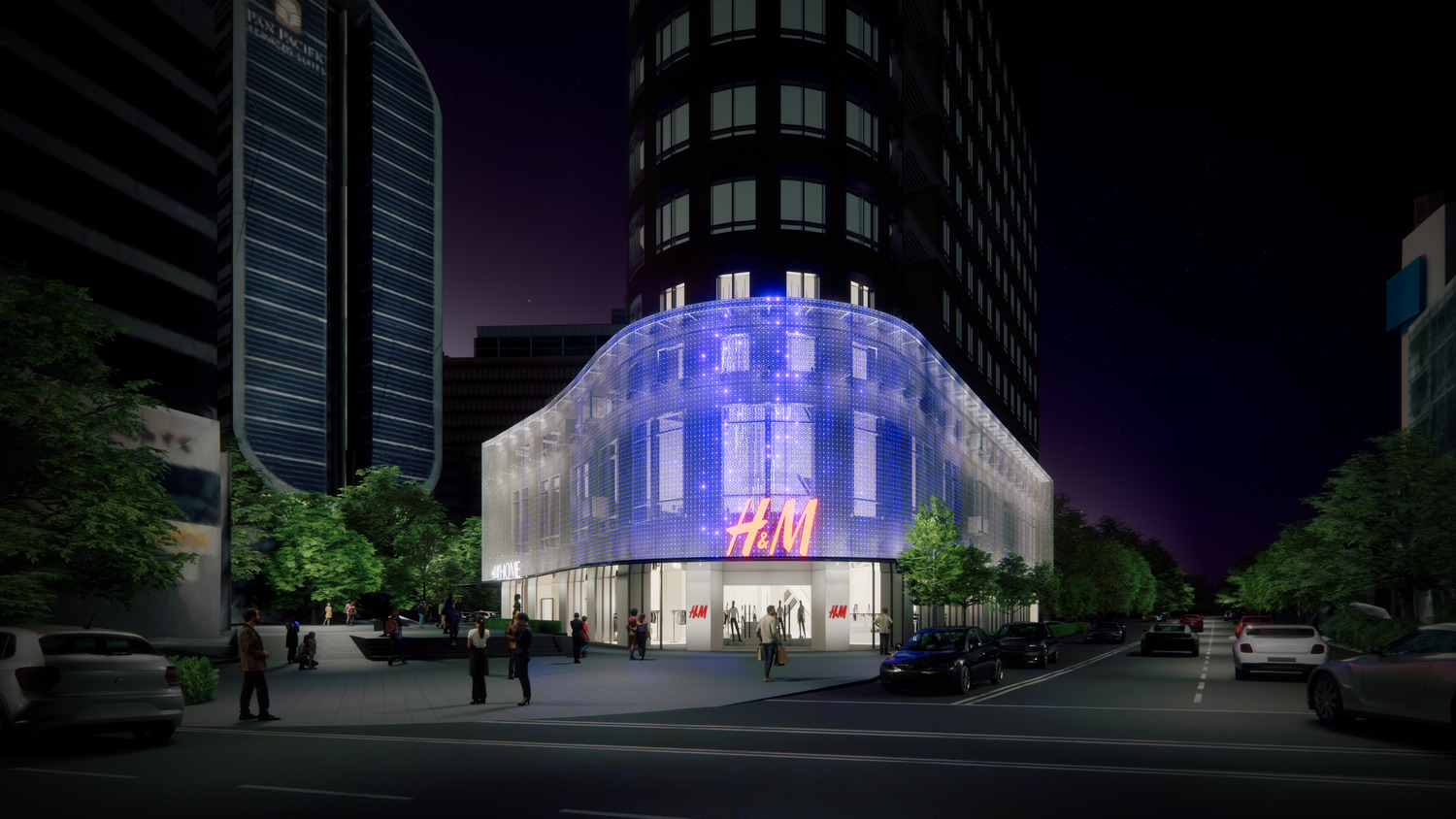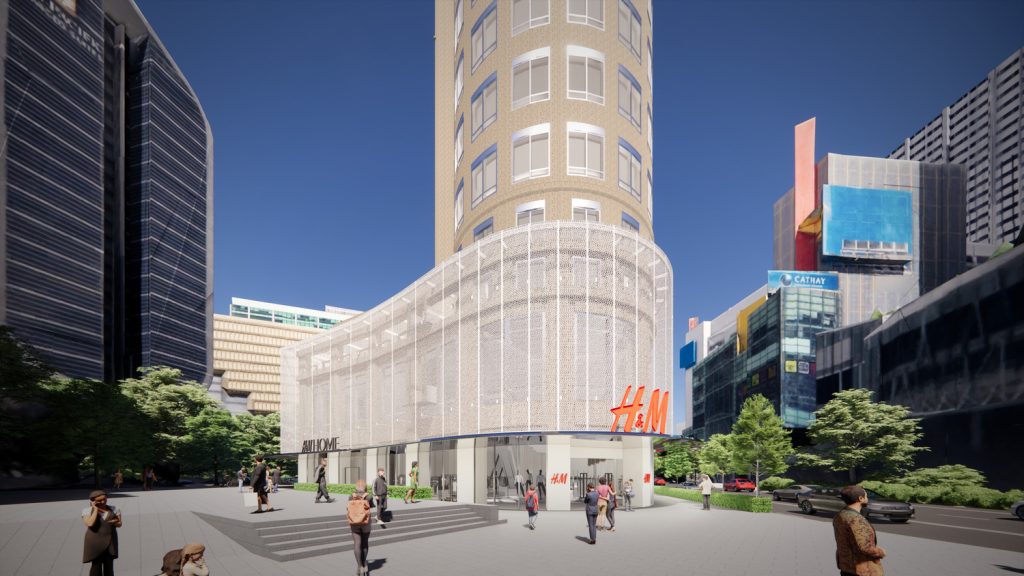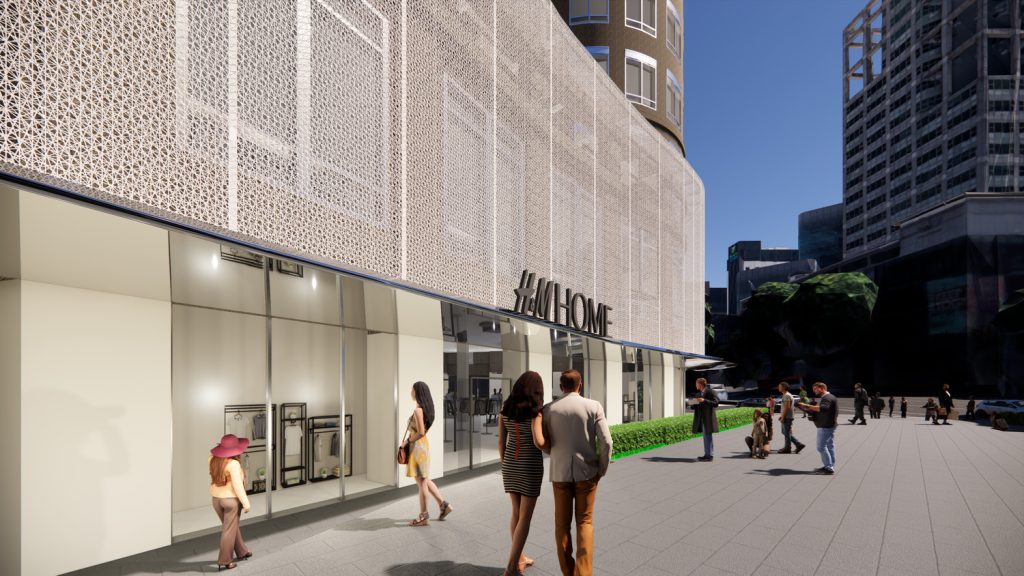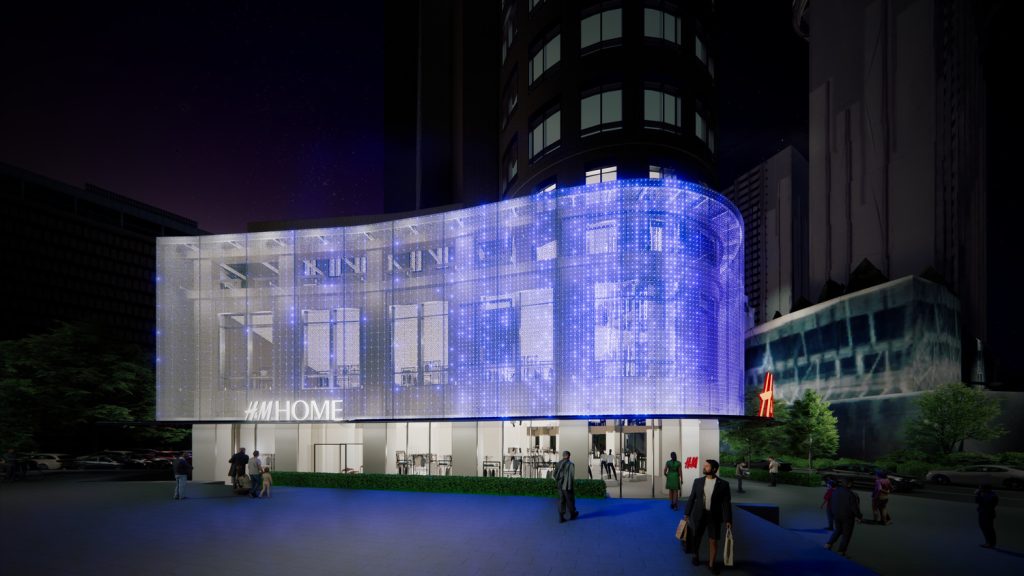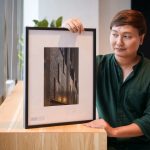24 August 2023
RSP, together with H&M Singapore, is thrilled to announce the transformation of the brand’s flagship store at Orchard Building on Thursday, 24 August 2023. The launch unveils an all-new retail experience, featuring the first-of-its-kind store façade in Southeast Asia made with the breakthrough i-Mesh textile, designed by RSP.
Incorporating sustainable design considerations, the use of i-Mesh creates zero waste as it is produced exactly in the shape and pattern desired. Our Associate Director, Khoo Teik Rong, shared more on the façade concept and i-Mesh material used for the flagship storefront.
The project team: Law Yoke Foong, Suen Wee Kwok, Chew Chee Kai, Cai Silan, Khoo Teik Rong, Joanna Lee Siew Hui, Jai Atul Shah, Soh Jiang Wen, Tan Zhe Hong, Ow Yeong Jun Jie and Melvin Lim Chung Wei.
“We are honoured to be a part of this journey with H&M to design a fresh new look for their only flagship store in Singapore. Through this creative collaboration with H&M, we developed an understanding of the ethos and vision outlined in the creative framework of the H&M brand. After many rounds of design iterations, we arrived at the concept of the canvas. The canvas is a tensile fabric façade that is envisaged as a dynamic interface that would allow H&M to curate and present its unique brand experience to the world.”
Design Concept
Since its opening in 2011 with its elegant white pleated aluminum façade; H&M’s only flagship store in Singapore has carved for itself an iconic fashion presence at the heart of Singapore’s shopping destination Orchard Road.
During the day, from a distance, the material presents itself as a deceptively simple white canvas to the world. As one approaches nearer, the canvas appears more translucent, revealing the previously hidden Art Deco building and its large windows offering a view of the H&M experience behind it. Upon closer inspection, the canvas is revealed as an intricately woven lattice that alludes to H&M’s relationship with textiles. On the inside, the canvas filters our harsh Singaporean tropical sun allowing only soft natural daylighting while keeping the heat out.
At night, the canvas takes on an entirely different character. It becomes a dynamic membrane that allows for vibrant colours and lighting effects to come together, showcasing and curating the H&M experience. During festive seasons, the canvas is positioned to become the hotspot of spectacular night-lighting displays along Orchard Road.
The design concept offers a simple yet elegant solution in crafting H&M’s newest fashion statement along Orchard Road. It is fresh, it is culturally contextual, it is ever-changing, it is sustainable, it is a pure expression of textile material, and we believe it embodies the vision and ethos of the H&M brand.
What vision or aspiration did the client have and how did you meet these?
When we first came on board the project, H&M was developing a new creative framework for the brand towards a fresh new direction. There was a real opportunity to be the first H&M Flagship store in the world to embody and champion this new vision. Despite the very short timeline, we took on this challenge and worked closely with the H&M team to produce the design concept that echoed the ethos and vision of this new creative framework. We believe that the completed project is a direct result of our successful collaboration with H&M.
What is the USP of the i-Mesh material?
We considered a wide variety of materials for the façade, but we found i-Mesh to be the most suitable for the performative and aesthetic qualities desired. As a reflection of H&M’s sustainability goals, it was imperative that the façade of their flagship store in Singapore echo that same ethos. i-Mesh is made from recycled materials and is recyclable at the end of its life. Secondly, as i-Mesh is completely customizable, it was uniquely positioned to represent a leading global fashion brand such as H&M. Thirdly, due to the i-Mesh’s light weight and tensile strength physical properties, we have managed to design a façade with minimal structural members and super-large panel sizes. This has allowed for a “pure” expression of the textile material, which would not be possible with other materials.
Any reason why the material has not been used as a facade in Southeast Asia before?
There is always a certain risk involved with new materials that are untested in the local market. However, we recognised the potential of the material and decided to champion its usage. As this was not a typical material that we were used to working with, we worked very closely with the founder and inventor of i-mesh, Alberto Fiorenzi to adapt this new material to our local context. We believe as a leading architectural design practice, our pursuit for innovation is a constant endeavor that comes in all forms and sizes.
How does the i-Mesh material contribute to sustainability in construction? Can you elaborate on its eco-friendly features and environmental benefits?
i-Mesh is produced with zero waste, using a bespoke manufacturing process that eliminates the need for offcuts and scraps. It is made from recyclable high-performance fibers that have an extended lifespan which reduces the needs for replacements. Furthermore, in case of damage, the modularised nature of the i-mesh sheets allows individual panels to be swapped out thus increasing the longevity of the façade. Materials such as i-Mesh are the future of construction materials, as we move towards a more technically refined manufacturing processes that will feed seamlessly into a Circular Economy of the future.
How does the facade tie in with H&M’s image, as well as sustainability efforts?
The new flagship at Orchard Road embodies H&M’s ideals of sustainability and sustainable development. The main material for the façade, i-Mesh, is a sustainable textile that has a low environmental impact throughout its lifecycle. This is aligned with H&M’s sustainability goals of becoming climate positive by 2040. With the design concept of the canvas, H&M has also departed from their previous flagship store designs by embracing and allowing for local cultural context to come forward as part of the intended experience. The canvas is always seen in tandem with its context, the existing Art Deco building.
Meanwhile at RSP, sustainability is also a key concern for us. In parallel to our collaboration with H&M for the flagship store, we also ran a design studio at SUTD that focused on sustainability and fashion. This platform allows us to have a wider cross-pollination of cutting-edge ideas with the students, researchers, academics, and other industry professionals.

